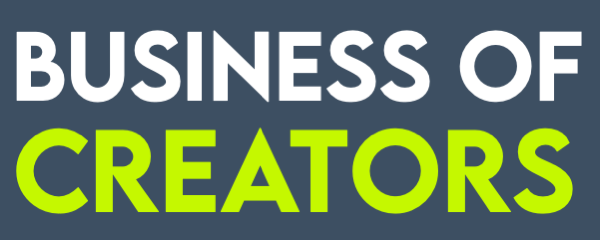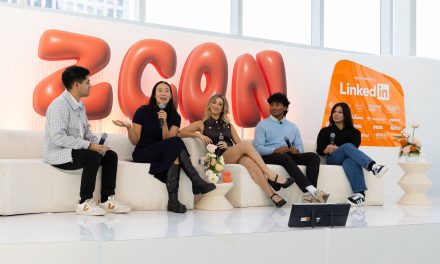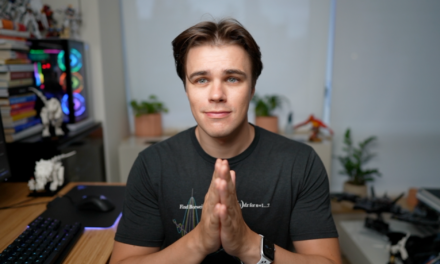From viral videos to robotics kits and middle school classrooms, CrunchLabs is building the future of science learning — one wildly fun project at a time.
When former NASA engineer turned YouTube star Mark Rober set out to make STEM education more exciting for kids, he didn’t just upload another viral video. He launched CrunchLabs — a subscription toy company designed to bring the magic of science and engineering into homes across the world.
But behind the scenes of Rober’s rocket-powered vision is Jim Lee, CrunchLabs’ President and COO, who left a cushy job at Google to help turn a spreadsheet and an idea into one of the most innovative creator-led businesses in the world.
In this conversation, Jim Lee breaks down how CrunchLabs went from a kitchen-table consulting project to a multi-product STEM brand with a powerful mission: to spark curiosity, build resilience, and reimagine science education — all while making it ridiculously fun.
This conversation is part of the Creator Commerce series Brought to You by .store Domains
Launching a product line? Start with a .store domain — the go-to web address for creators selling online. Top names like MrBeast, Dude Perfect, and Colin & Samir trust .store to build sleek, memorable URLs like YourName.store that drive traffic and sales. Get yours today at go.store/boc8.
From Google Sheets to Subscription Success
Before CrunchLabs was a company, it was a conversation — one that started on the drive to a soccer game.
“I had known Mark long before YouTube was even a thing,” Lee recalls. “We used to play soccer together. He had under a million subscribers at the time. We’d just talk — him from the creator side, me from the business side.”
Eventually, those chats turned into a kitchen-table strategy session, complete with operating plans, financial models, and the earliest blueprint of what CrunchLabs could become.
That original Google Sheet? They still use it today.
Launched in June 2022 with a single YouTube video unveiling Mark Rober’s “secret laboratory,” CrunchLabs sold out within days. The response was so overwhelming, it briefly broke Shopify.
Engineering Toys That Spark a Lifelong Love of STEM
CrunchLabs is more than a merch play — it’s a STEM education company disguised as a toy brand. The company offers two core products:
- Build Box: A monthly subscription box for kids aged 8–12, each featuring a premium toy that teaches a science or engineering principle.
- Hack Pack: A more advanced kit for teens and adults, combining robotics, coding, and even AI-driven tutorials.
Each product takes about a year to develop. That means at any given moment, 24 different builds are in production — a massive coordination effort across creatives, engineers, educators, and, of course, Rober himself.
“We pair every toy with a high-quality video,” Lee explains. “It’s not just about learning — it’s about making it so fun you don’t realize you’re learning until you’re already hooked.”
Building a Brand That Kids (and Parents) Actually Love
Rather than rely on Facebook ads or Instagram campaigns, CrunchLabs leans heavily into creator collaborations and word-of-mouth.
Their recent team-up with chess.com, for example, was a standout success — blending problem-solving, resilience, and gamification in a way that mirrored CrunchLabs’ own educational philosophy.
And when it comes to testing? It’s rigorous.
“We do extensive toy testing with kids and adults,” says Lee. “Plus international safety certifications, accessibility tweaks, and constant surveying. We ask parents: ‘Did your child’s interest in STEM increase?’ And the overwhelming answer is yes.”
CrunchLabs even sends plushies as thank-you gifts to customers who provide detailed feedback. The company’s obsession with user input is part of what makes their products not only educational but genuinely delightful.
The Real Work Behind the YouTube Magic
Behind the foam pits, Nerf blasters, and giant toy replicas seen in Rober’s videos lies a serious operation. CrunchLabs now employs top-tier talent across media, product, and education — all working under one roof.
“We spend a lot of time and money to make it look like we’re just playing with squirrels in Mark’s backyard,” Lee laughs. “But this is a deeply skilled and dedicated team.”
That said, every few months the team does take a break for a company-wide “no actual work” day. They volunteer, share lunch, and — yes — jump into the foam pit. It’s all part of the company culture: serious work powered by genuine joy.
From Content to Curriculum: The Next Big Leap
While the toys keep coming, CrunchLabs’ next frontier is classrooms.
Rober once wanted to be a teacher. Now, through CrunchLabs, he might reach more students than he ever imagined. The company recently piloted a full science class — complete with curriculum, lesson plans, and teacher guides — that aligns with national standards.
“We’ve been in classrooms, observing what works,” says Lee. “Mark even shows up in disguise sometimes. The goal is to build something so good, teachers choose it not just because it’s fun, but because it works.”
Middle school science education is just the start. Lee hints at new formats, physical experiences, and even deeper integrations between products and content.
Lessons for Creators and Entrepreneurs
So what can other creators or entrepreneurs learn from CrunchLabs?
According to Lee, success comes down to three things:
- Authenticity: “If it’s overly commercial, people smell that immediately. It has to come from the heart.”
- Product-Market Fit: “You need a killer idea that solves a real problem in a meaningful way.”
- Asymmetric Bets: “We look for decisions with low downside but massive upside. That’s how you find the magic.”
And if you’re just getting started?
“Set a plan, start small, and look for two-way doors — decisions you can walk back if they don’t work. That’s how you iterate your way into something big.”
“We’re Just Getting Started”
For all its viral moments and engineering marvels, the heart of CrunchLabs is simple: get kids excited about learning.
From coding robots to battling robots, from Roblox games to real classrooms, the company is proving that STEM doesn’t have to be boring — it can be as thrilling as a glitter bomb or a giant jello pool.
As Jim Lee puts it: “Mark’s mission is to reach as many brains as possible. That’s what we’re building toward — and we’re just getting started.”






